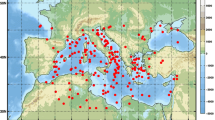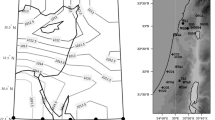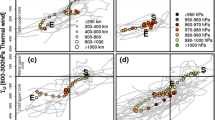Summary
The Australian east coast is subject to a range of synoptic/mesoscale weather systems ranging from low-pressure troughs, small explosive low-pressure systems near the Australian east coast, to synoptic scale maritime low-pressure systems, and both tropical and extra-tropical cyclones. These systems vary dynamically in intensity and structure across a spectrum that includes both weak and intense cold-cored systems, to warm-cored tropical cyclones and “hybrid” systems. A preliminary 10 year climatology, from 1992 to 2001, is presented that concentrates on those cyclones in open waters that threaten life and property as a result of heavy coastal rain or the combined effects of wind, sea state and swell, including both long fetch and storm surges. There are 28 systems in the 10-year climatology. In terms of their development, the most numerous were the 50% of storms that occurred as systems within an easterly trough, followed by 21% that occurred as circulations on decaying Tasman Sea cold fronts.
In addition, a numerical weather prediction (NWP) modelling case study of the ‘hybrid’ sub-tropical cyclone system of March 2001 was carried out using archived real-time data. Operational numerical weather prediction (NWP) model forecasts of this system, which was not named in accordance with Australian classification policy, were all poor except for the US MRF model, which provided marginally useful guidance. None of the operational global and regional models available to forecasters predicted an intense cyclone, and only the US MRF model predicted landfall. A high-resolution forecast using all available data produced significantly improved predictions over the operational models up to four days before landfall.
Similar content being viewed by others
References
BW Buckley LM Leslie (2000) ArticleTitleThe Australian Boxing Day storm of 1998 – Synoptic description and numerical simulations. Wea Forecast 15 543–558
RE Hart (2003) ArticleTitleA cyclone phase space derived from thermal wind and thermal asymmetry. Mon Wea Rev 131 585–616 Occurrence Handle10.1175/1520-0493(2003)131<0585:ACPSDF>2.0.CO;2
LC Hopkins GJ Holland (1997) ArticleTitleAustralian heavy-rain days and associated east coast cyclones: 1958–92. J Climate 10 621–635 Occurrence Handle10.1175/1520-0442(1997)010<0621:AHRDAA>2.0.CO;2
Leslie LM, Purser RJ (1997) A new semi-Lagrangian semi-implicit NWP model for operations and research: Formulation and performance in single and multi-processor computing environments. Atmosphere-Ocean, Special Andre Robert Memorial Issue. Canadian Meteorological and Oceanographic Society/NRC Research Press (Lin CA, Laprise R, and Ritchie H, eds), pp 75–101
LM Leslie MS Speer (1998) ArticleTitleShort-range ensemble forecasting of explosive Australian east coast cyclogenesis. Wea Forecast 13 822–832
Author information
Authors and Affiliations
Rights and permissions
About this article
Cite this article
Qi, L., Leslie, L. & Speer, M. Climatology of cyclones over the southwest Pacific: 1992–2001. Meteorol. Atmos. Phys. 91, 201–209 (2006). https://doi.org/10.1007/s00703-005-0149-4
Received:
Revised:
Accepted:
Published:
Issue Date:
DOI: https://doi.org/10.1007/s00703-005-0149-4




